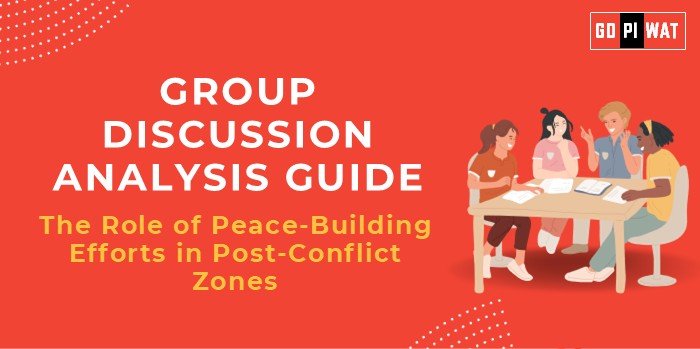📋 WAT/Essay Analysis Guide: The Role of Peace-Building Efforts in Post-Conflict Zones
🌟 Understanding the Topic’s Importance
Peace-building not only prevents the recurrence of conflicts but also supports long-term development and social cohesion, making it a critical topic for aspiring leaders in international relations and development sectors.
📝 Effective Planning and Writing
- ⏳ Time Allocation:
- Planning: 5 minutes
- Writing: 20 minutes
- Review: 5 minutes
- 📋 Preparation Tips:
- 📊 Identify key statistics and case studies.
- 🔍 Focus on both achievements and challenges.
🎯 Introduction Techniques for Essays
- ⚖️ Contrast Approach: “While post-conflict nations like Rwanda thrive through reconciliation, others like Syria struggle with recurring violence, highlighting the uneven outcomes of peace-building efforts.”
- 💡 Solution-Based Approach: “Peace-building efforts, if inclusive and adequately funded, can transform war-torn regions into stable societies, as evidenced by the Balkans.”
📚 Structuring the Essay Body
- 🏆 Achievements:
- Discuss successes like Rwanda’s reconciliation efforts and Colombia’s peace accords.
- ⚠️ Challenges with Comparative Analysis:
- Highlight funding gaps and cultural barriers.
- Contrast successes in Northern Ireland with setbacks in Afghanistan.
- 🔮 Future Outlook:
- Explore innovations like digital governance and community empowerment.
✅ Concluding Effectively
- ⚖️ Balanced Perspective: “While peace-building has achieved significant milestones, its true potential lies in addressing challenges like funding and inclusivity.”
- 🌍 Global Comparison: “Drawing lessons from Rwanda and Northern Ireland, a hybrid approach combining grassroots efforts with robust international support is essential.”
🌱 Recommendations for Sustainable Progress
- 🤝 Strengthen local governance structures.
- 💼 Promote public-private partnerships for economic revival.
- 💻 Leverage technology for transparency and efficiency.
📄 Sample Short Essays
⚖️ Balanced Perspective
Peace-building is a transformative process essential for stability in post-conflict zones. By fostering governance, societal healing, and economic revival, it prevents conflict recurrence. However, challenges like funding deficits and cultural barriers require global collaboration for sustainable progress.
🔧 Solution-Oriented
To succeed, peace-building must integrate local governance reforms and global funding, as seen in Colombia’s success story. Strengthening institutions and inclusivity ensures long-term stability.
🌍 Global Comparison
Post-conflict recovery varies widely, with Rwanda excelling in community integration while Afghanistan highlights the risks of external dependency. Peace-building efforts must adapt to local contexts to ensure lasting impact.


